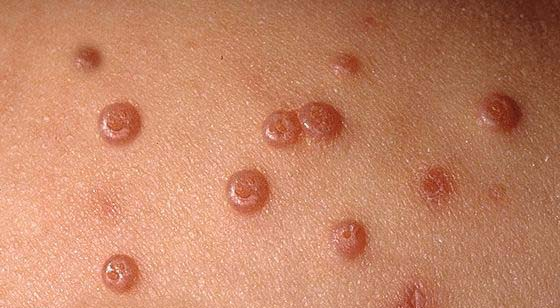Molluscum Contagiosum: To treat or not to treat?
Molluscum contagiosum (MC) is a poxvirus that presents with pink or skin colored umbilicated firm papules. The condition most often presents in the pediatric population, though adults can also present with the disease. Eczema is a risk factor for the development of molluscum contagiosum. The condition is transmitted from direct contact with infected skin. When adults present with MC, they often become inoculated through sexual activity or contact sports. MC can present anywhere on the body.
On average, individual lesions of molluscum contagiosum resolve within a few months, with an infection lasting for up to a year. In patients who are immunosuppressed, they may present with larger lesions and more extensive disease. While MC doesn’t tend to be painful, patients often seek treatment due to the cosmetic appearance of the lesions.
In addition to the aesthetic concerns of patients who present with MC, patients may also seek treatment due to itching. Lesions of molluscum can spread through autoinoculation. A recent review article in Clinical, Cosmetic and Investigational Dermatology discusses current perspectives on molluscum contagiosum. The article points out that as MC is a self-limited condition and the need for active treatment is controversial. Consensus for treatment is indicated for “patients with extensive disease, secondary complications or aesthetic complaints”. Of interest, the authors of this study report active treatment often does not improve the resolution rate when compared to observation alone. Of importance, patients should be advised “not to scratch or rub lesions, share towels, tub or bath utensils” in an effort to prevent the spread of MC.
There are multiple treatments for MC with varied efficacy. Methods of treatment for MC include mechanical methods, chemical methods, immunomodulatory methods and antivirals. Included in mechanical treatments are cryotherapy, curettage and pulsed dye laser. All of these treatments can be painful, particularly in the pediatric population. Pulsed dye laser has been found to be an effective and well tolerated treatment, though cost and availability limit its use. Potassium hydroxide is a chemical method of removal that has been found to be safe and effective with the added benefit of application by patients. The effectiveness of potassium hydroxide was compared to that of cryotherapy. The current evidence for imiquimod as a treatment for MC is controversial. Evidence for newer treatments for MC is preliminary and include sinecatechins, intralesional %-FU, hyperthermia and zoster immune globulin. The authors of this study conclude curettage or the application of 0.7% cantharidin as the most cost-effective treatments for MC.
